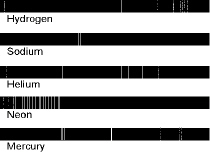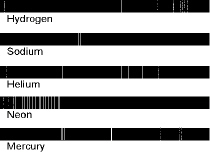Modified True/False
Indicate
whether the statement is true or false. If false, change the identified word or phrase to make
the statement true.
|
|
|
1.
|
A system of two stars tied together by gravity
and orbiting each other is known as a protostar. _________________________
|
Multiple Choice
Identify the
choice that best completes the statement or answers the question.
|
|
|
2.
|
Scientists analyze visible light and other electromagnetic waves to determine
their source or composition using a tool known as a:
a. | spectrometer. | b. | microscope. | c. | galvanometer. | d. | telescope. |
|
|
|
3.
|
The explosion of a very large star is known as a:
a. | black hole. | b. | white dwarf. | c. | neutron
star. | d. | supernova. |
|
|
|
4.
|
A star begins to form when gravitational forces cause denser regions of a huge
cloud of gas and dust to collapse. The earliest stage of a star’s life cycle is called
the:
a. | protostar. | b. | red giant. | c. | white
dwarf. | d. | supernova. |
|
|
|
5.
|
 Using the
diagram above, identify the element with the following spectrum.  a. | Helium | b. | Hydrogen | c. | Neon | d. | Sodium |
|
|
|
6.
|
The stars that stay on the main sequence portion of an H-R diagram the longest
are those stars with the:
a. | largest mass. | b. | smallest mass. | c. | brightest
light. | d. | highest temperature. |
|
|
|
7.
|
Using a spectrometer to analyze the spectrum of light from stars, scientists
have learned that most stars are made up of:
a. | mostly carbon with smaller amounts of oxygen and traces of other
elements. | b. | mostly iron. | c. | mostly hydrogen with smaller amounts of helium
and traces of other elements. | d. | all of the elements up to iron (atomic number
26) in roughly equal amounts. |
|
|
|
8.
|
When the core of a star runs out of hydrogen:
a. | nuclear fusion stops and the star stops producing light. | b. | the core contracts,
raising the temperature so that other fusion reactions occur. | c. | the star is
immediately crushed into a black hole. | d. | the star becomes a white dwarf and then a red
giant. |
|
Completion
Complete each
statement.
|
|
|
Select the correct term to complete each sentence. There are extra terms in
the list.| protostar | sunspots | fusion | | blue | red | spectroscope | | temperature | energy | neutron | | carbon | oxygen | helium | | hydrogen | supernova | camera | | | |
|
|
|
9.
|
An instrument that separates electromagnetic energy into bright line displays
allows astronomers to analyze this electromagnetic energy. The instrument is called a
_________________________.
|
|
|
10.
|
The two most common elements in the universe are ____________________ and
____________________.
|
|
|
11.
|
Near the end of the life cycle of a giant star, a spectacular explosion takes
place which creates many of the heavier elements. The name for this huge, quick explosion is
____________________.
|
Short Answer
|
|
|
12.
|
 Identify the
element with the following spectrum, using the diagram above. 
|
|
|
13.
|
Below are listed the stages in the life cycle of a typical, medium-sized star
like our sun. Arrange the steps in their proper order to represent our sun’s life cycle after
its formation from a nebula.
planetary nebula, protostar, red giant, our sun, white
dwarf
1.
2.
3.
4.
5.
6.
|
Essay
|
|
|
14.
|
Eventually, the core of our Sun will run out of hydrogen. Explain what
astronomers believe will happen next.
|